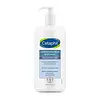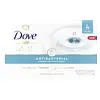What's inside
What's inside
 Benefits
Benefits

No benefits
 Concerns
Concerns

 Ingredients Side-by-side
Ingredients Side-by-side

Water
Skin ConditioningCocamidopropyl Betaine
CleansingSodium Lauroyl Isethionate
CleansingHydroxypropyl Starch Phosphate
Sodium Chloride
MaskingLauric Acid
CleansingSodium Lauroyl Glycinate
CleansingGlycine Soja Oil
EmollientHydrogenated Soybean Oil
EmollientGlycerin
HumectantPhenoxyethanol
PreservativePalmitic Acid
EmollientStearic Acid
CleansingButyrospermum Parkii Butter
Skin ConditioningBenzyl Alcohol
PerfumingGuar Hydroxypropyltrimonium Chloride
Skin ConditioningPersea Gratissima Oil
Skin ConditioningPrunus Amygdalus Dulcis Oil
Skin ConditioningSodium Benzoate
MaskingTetrasodium EDTA
Citric Acid
BufferingWater, Cocamidopropyl Betaine, Sodium Lauroyl Isethionate, Hydroxypropyl Starch Phosphate, Sodium Chloride, Lauric Acid, Sodium Lauroyl Glycinate, Glycine Soja Oil, Hydrogenated Soybean Oil, Glycerin, Phenoxyethanol, Palmitic Acid, Stearic Acid, Butyrospermum Parkii Butter, Benzyl Alcohol, Guar Hydroxypropyltrimonium Chloride, Persea Gratissima Oil, Prunus Amygdalus Dulcis Oil, Sodium Benzoate, Tetrasodium EDTA, Citric Acid
Sodium Lauroyl Isethionate
CleansingStearic Acid
CleansingSodium Oleate
CleansingSodium Stearate
CleansingWater
Skin ConditioningSodium Isethionate
CleansingLauric Acid
CleansingSodium C14-16 Olefin Sulfonate
CleansingSodium Laurate
CleansingParfum
MaskingBenzalkonium Chloride
AntimicrobialDipropylene Glycol
HumectantSodium Chloride
MaskingTetrasodium Etidronate
Emulsion StabilisingTetrasodium EDTA
Titanium Dioxide
Cosmetic ColorantCI 42090
Cosmetic ColorantCI 19140
Cosmetic ColorantSodium Lauroyl Isethionate, Stearic Acid, Sodium Oleate, Sodium Stearate, Water, Sodium Isethionate, Lauric Acid, Sodium C14-16 Olefin Sulfonate, Sodium Laurate, Parfum, Benzalkonium Chloride, Dipropylene Glycol, Sodium Chloride, Tetrasodium Etidronate, Tetrasodium EDTA, Titanium Dioxide, CI 42090, CI 19140
Ingredients Explained
These ingredients are found in both products.
Ingredients higher up in an ingredient list are typically present in a larger amount.
Lauric Acid is a fatty acid or lipid. About half of fatty acids in coconut oil is lauric acid.
This ingredient helps hydrate and sooth skin. As a humectant, it helps trap moisture. It also aids in cleaning and enhancing the texture of products.
Lauric acid may not be Malassezia folliculitis, or fungal acne, safe.
Learn more about Lauric AcidChances are, you eat sodium chloride every day. Sodium Chloride is also known as table salt.
This ingredient has many purposes in skincare: thickener, emulsifier, and exfoliator.
You'll most likely find this ingredient in cleansers where it is used to create a gel-like texture. As an emulsifier, it also prevents ingredients from separating.
There is much debate on whether this ingredient is comedogenic. The short answer - comedogenic ratings don't tell the whole story. Learn more about comegodenic ratings here.
The concensus about this ingredient causing acne seems to be divided. Research is needed to understand if this ingredient does cause acne.
Scrubs may use salt as the primary exfoliating ingredient.
Learn more about Sodium ChlorideThis cleansing agent is derived from coconuts. You might know it as "SLI".
SLI is known for giving products a creamy lather while providing a gentle cleanse. You can find this product in face cleansers, shampoos, and body washes.
According to a manufacturer, it is stable in water-based formulations with a pH of 6-8. This ingredient is fully soluble in hot water and partially soluble in cold water.
Learn more about Sodium Lauroyl IsethionateStearic Acid is a fatty acid. It is an emollient, emulsifier, and texture enhancer.
As an emollient, stearic acid helps soften skin. It aids the skin's protective barrier by preventing water loss. It also provides a gentle cleansing effect without stripping away natural oils.
Stearic acid may also be used to enhance the texture of products. It can add volume and stabilize ingredients such as water and oil. This can help water and oil ingredients from separating.
Sources of stearic acid include animal or vegetable fats/oils such as coconut or shea. It can be naturally found in butter, cocoa butter, shea butter, vegetable fats, and animal tallow.
This ingredient may not be Malassezia folliculitis, or fungal-acne safe.
Learn more about Stearic AcidTetrasodium EDTA is the salt formed from neutralizing ethylenediamine tetraacetic acid with sodium hydroxide. It is a chelating agent and used to prevent metal ions from binding to other ingredients. This helps keep the product and ingredients stable.
Tetrasodium EDTA comes as a white solid and is soluble in water.
Water. It's the most common cosmetic ingredient of all. You'll usually see it at the top of ingredient lists, meaning that it makes up the largest part of the product.
So why is it so popular? Water most often acts as a solvent - this means that it helps dissolve other ingredients into the formulation.
You'll also recognize water as that liquid we all need to stay alive. If you see this, drink a glass of water. Stay hydrated!
Learn more about Water